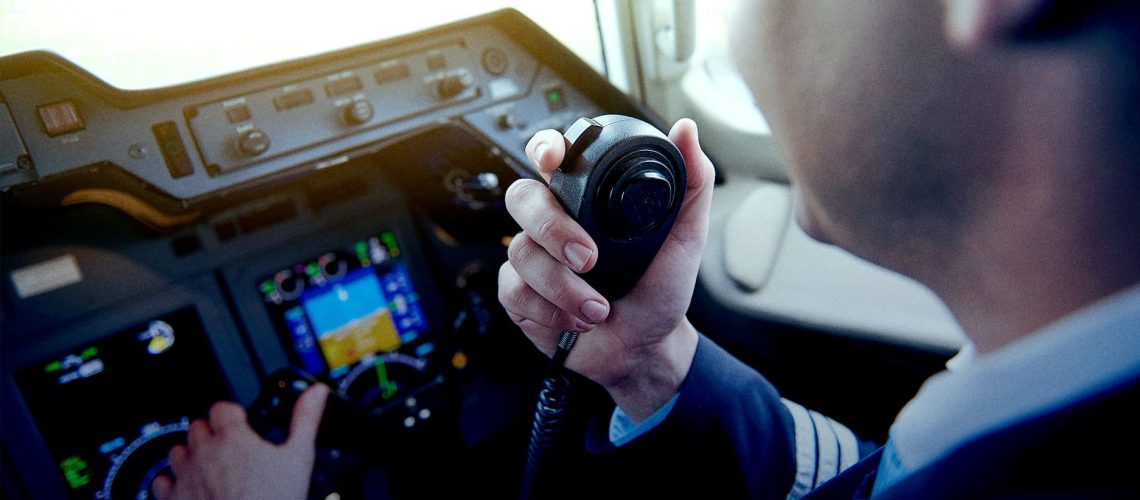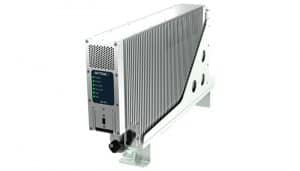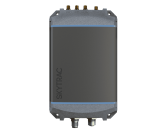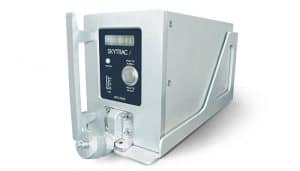What is push-to-talk in aviation?
Push-to-talk, or PTT, is a common feature required in cockpits worldwide, but what is it, and when did it become a staple in aircraft communications?
Push-to-talk is a means of talking on communication lines using a button to switch from voice reception to voice transmission. An operator presses a button to activate the push-to-talk microphone and transmit their voice. The microphone is deactivated when they release the button, and the device returns to voice reception mode. One of the most popular uses of PTT technology is walkie-talkies, a simple way of communicating by voice through the press of a button.
Before using PTT communication, early aviation involved visual signs and simple radio sets with limited functionality. As push-to-talk radio technology progressed throughout the early 20th century, its efficiency and effectiveness made it a natural fit for aircraft and, over time, became a standardized feature of equipment.
Why is push-to-talk important?
PTT communications are an essential service for aircraft operators for many reasons, including:
- Safety: Aircraft operators must relay time-sensitive and critical information accurately and efficiently. Push-to-talk allows for clear and controlled communication, minimizing miscommunication risk.
- Clear communication: PTT ensures that messages are clear and uninterrupted by background noise.
- Reduced interference: Because the system only transmits when the button is held down, there is less chance of interference from continuous open microphones. This results in avoiding distracting and disruptive communication.
- Compliance: Push-to-talk is a standard part of aviation communication procedures, so it’s a must-have for aircraft.
What's the difference between radio-based and satellite-based push-to-talk?

Both radio-based and satellite-based push-to-talk systems are used in aviation around the world. Here are some of the key differences between them:
Push-to-talk radio systems use radio towers to transmit and receive signals over shorter, more limited ranges. Their effectiveness can vary depending on the terrain, obstacles, and radio tower infrastructure. In well-served areas, coverage can be effective, but it can be spotty or non-existent in remote areas.
Satellite-based systems use satellites in orbit to relay signals and can provide global coverage depending on the satellite network. They can provide consistent, reliable, and fast communication regardless of terrain or obstacles due to extensive satellite infrastructure.
What systems does SKYTRAC offer to enable push-to-talk?
SKYTRAC offers several products that enable clear voice, text, and push-to-talk communication for aircraft operators.
The SDL-350 is our flagship satellite transceiver and onboard server. It allows operators 99.9% global uptime reliability, near-instant communication, and up to 704 Kbps of broadband connectivity through Iridium Certus. The SDL-350 also allows for live video streaming.
The SkyLink 7100 is our midband satcom terminal, offering up to 88 Kbps of connectivity through Iridium Certus, easy installation, and reliable voice, text, and push-to-talk communication.
The ISAT-200A-07 provides narrowband satellite connectivity with speeds of 2.4 Kbps for clear and secure push-to-talk capabilities.
SKYTRAC’s push-to-talk solutions have been designed to ensure clear, reliable, and fast global communication for operators, no matter how challenging the environment. These services provide operators with exceptional reliability, safety, and performance, allowing them to minimize miscommunication and maximize efficiency within their aircraft.
Provide up to 704 Kbps of Satcom and numerous interfaces with the true all-in-one, flagship SDL-350.
Versatile midband Satcom solution with cellular to deliver continuous connectivity for manned and unmanned operations.
Enable multiple capabilities with the cost effective narrowband Satcom and onboard server solution.
Conclusion
Radio-based and satellite-based push-to-talk systems are communication methods that have become standardized in the aviation industry. They help reduce noise interference, minimize the risk of miscommunication, and improve operator safety by providing clear and reliable voice transmission and reception.
If you want more information about SKYTRAC’s push-to-talk solutions, feel free to connect with someone from our team here.
With industry-leading products and systems installed on over 2,500 aircraft worldwide, SKYTRAC has been a trusted source of reliability, safety, and performance for major OEMs (original equipment manufacturers) and operators for over 35 years.
Get in Touch
Speak with a connectivity expert today. We are eager to discuss your business needs.




